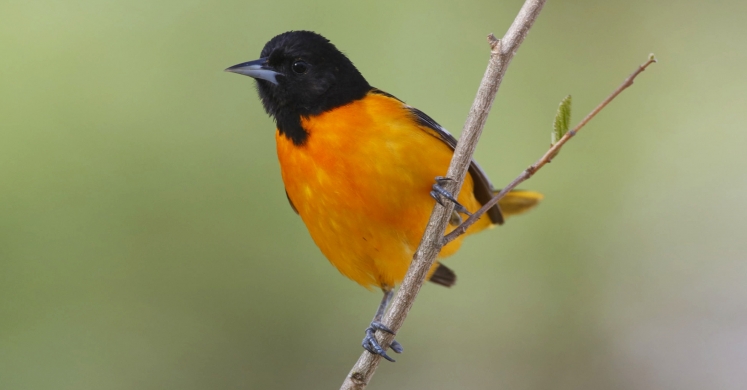Blog

#bioPGH Blog: Baltimore Orioles
 A resource of Biophilia: Pittsburgh, #bioPGH is a weekly blog and social media series that aims to encourage both children and adults to reconnect with nature and enjoy what each of our distinctive seasons has to offer. From the best times to plant seasonal flora and enjoy their peak blooms, to astronomical events and creatures to keep an eye and ear out for, Phipps will keep you in the know with what’s going on in our environment!
A resource of Biophilia: Pittsburgh, #bioPGH is a weekly blog and social media series that aims to encourage both children and adults to reconnect with nature and enjoy what each of our distinctive seasons has to offer. From the best times to plant seasonal flora and enjoy their peak blooms, to astronomical events and creatures to keep an eye and ear out for, Phipps will keep you in the know with what’s going on in our environment!
While their black and bright orange plumage warranted that they be named for the Baltimore family of England, the same family that also gave their name to Maryland’s largest city, these birds actually occupy a territory that ranges from Central America all the way up the eastern United States and into Canada. Baltimore orioles, or Icterus galbula, begin to make their presence known throughout eastern North America on their spring migration from Central America to their summer breeding grounds via their high-pitched whistling song:
Upon arriving to their breeding grounds throughout eastern and east-central North America, females will begin constructing nests that resemble tightly woven, hanging pouches 20 to 30 feet high in tall deciduous trees towards the end of slender, drooping branches. Female orioles will take charge of incubating their set of three to six bluish-white or pale-grey eggs adorned with brown and black speckling near the larger end of the egg for approximately two-weeks. Upon hatching however, both male and female orioles will take turns tending to their nestlings for another two-weeks until they are ready to fledge the nest.
Connecting to the Outdoors Tip: While they’re prepping their nests for the arrival of eggs and hatchlings, Baltimore orioles will be busily foraging in flowering and fruiting trees for ripe dark-colored fruits, insects and nectar. Did you know that orioles are particularly fond of grape jam and oranges? You can attract orioles to your own backyard by offering grape jam or halved oranges, pulp side up, on a flat surface or feeder for the birds to enjoy! Consider helping little ones create their own biodegradable orange birdfeeders to attract orioles, and even some butterflies, by simply leaving the pulpy portion of an orange and topping it off with some mealworms or preserves. If you see a Baltimore oriole, say something! You can help scientists and researchers track the migration routes and nesting areas of these particular birds by reporting oriole sightings at Journey North. When you report oriole sightings, you’re taking part in real-time research to help map this particular species of bird’s range and territories, thereby helping scientists better understand how factors such as climate change and food and nesting site availability are potentially influencing where these birds go. You can even help local scientists from the National Aviary conduct research right in your own backyard through their Neighborhood Nest Watch program! And don't forget, on Sun., June 5, you can help scientists and naturalists from several local organization and institutions conduct real-time research right here at Phipps Conservatory during our first-ever BioBlitz festival! This event is free to the public so mark your calendar and come help us and local scientists learn about all the critters that call Pittsburgh’s parks home, including Baltimore orioles.
Continue the Conversation: Share your nature discoveries with our community by posting to Twitter and Instagram with hashtag #bioPGH, and R.S.V.P. to attend our next Biophilia: Pittsburgh meeting.
Additional Resources:
Baltimore Orioles | Audubon Guide to North American Birds
Baltimore Orioles | The Cornell Lab of Ornithology
Baltimore Oriole Song | The Cornell Lab of Ornithology
BioBlitz 2016 | Phipps Conservatory and Botanical Gardens
Top Tips for Attracting Orioles to Your Yard | Birds & Blooms
Orange Bird Feeder | Made with Happy
Oriole Bird Craft | Learn Create Love
Oriole | Journey North
Neighborhood Nest Watch | National Aviary

